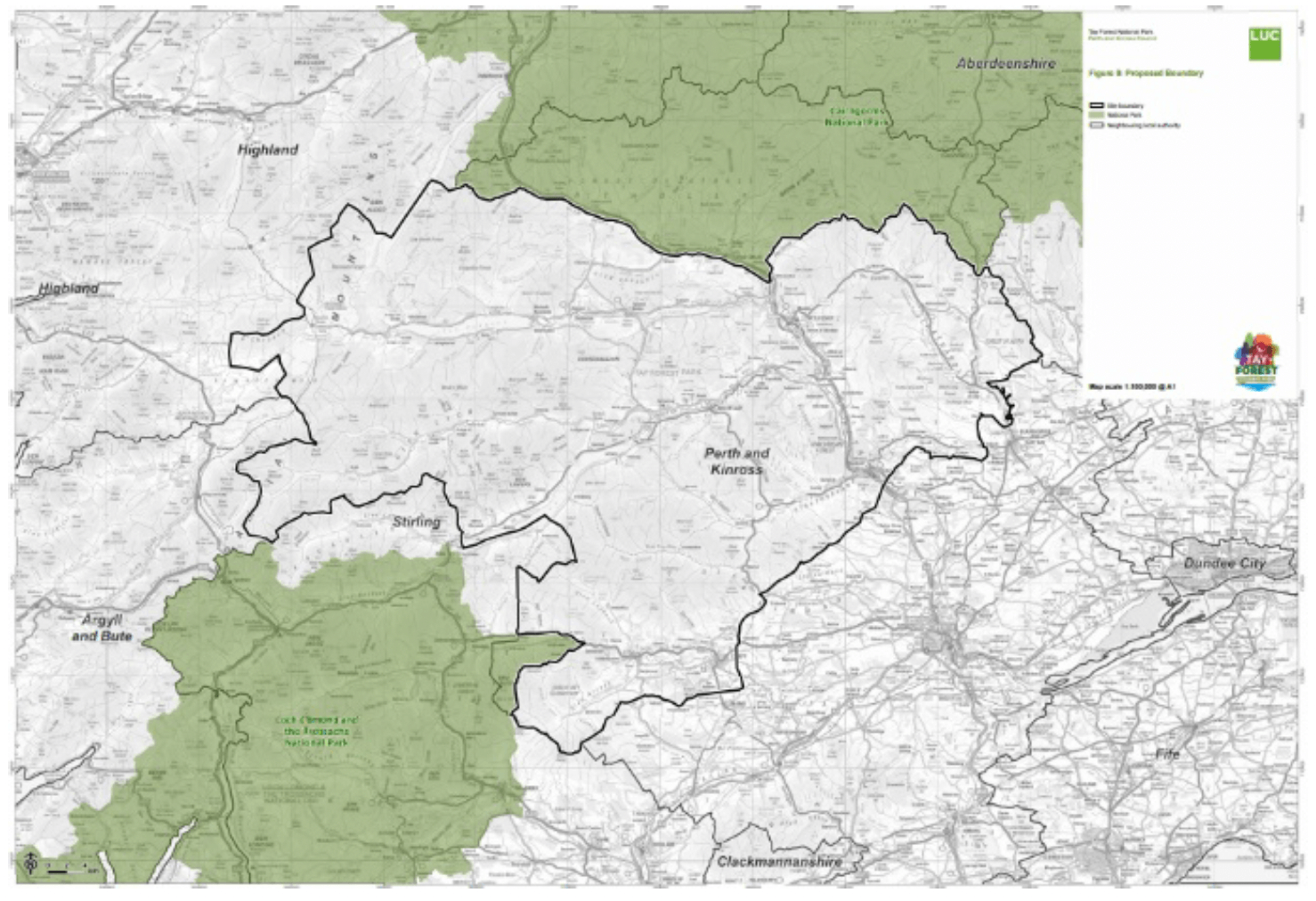Scotland's New National Park Appraisal Panel: final report
This report includes the Appraisal Panel’s advice to Ministers on the extent to which nominated areas meet each of the criteria for consideration for designation as new National Parks.
Tay Forest

The panel noted the size of the proposed area (c. 290,000 hectares which is larger than Loch Lomond & the Trossachs National Park and smaller than Cairngorms National Park). In terms of character and coherence, the panel noted that the nomination clearly sets out the area’s identity, with a focus on Perthshire’s strong landscape character (hills, glens and lochs) and the River Tay. The panel noted that the proposed area was bounded by an existing Local Authority boundary (Perth and Kinross) and shares a boundary with part of both existing National Parks.
The nomination presents evidence of the extensive natural heritage designations that are of outstanding national importance. This includes SPAs, SACs, RAMSAR sites, SSSIs, one NNR, important habitats, substantial woodland and the River Tay. The panel also noted evidence of significant cultural heritage assets that are of outstanding national importance, in particular the Crannogs (and the Crannog Centre), historic settlements, designed landscapes and battlefields.
In terms of how a National Park in Tay Forest could meet the special needs of the area, the nomination sets out how National Park designation could support nature restoration in the area – including woodland expansion, peatland restoration and opportunities to link to nature restoration projects in the two existing Parks (e.g. Cairngorms Connect and Wild Strathfillan). It also identifies cultural assets that could be restored and the potential role of a National Park to support this (e.g. creating historic trails, interpretation, managing visitor pressures). In terms of National Park designation supporting the sustainable use of the area’s natural resources, the nomination presents a range of issues including forestry, nature friendly farming, renewable energy and raptor persecution. It provides some detail about how National Park designation could help to address these, although this is not comprehensive. The nomination presents some relevant socio-economic analysis including on social wellbeing, affordable housing and social isolation issues, however there is less specific detail on how a National Park could help to address these issues.
The nomination identifies a number of opportunities of wider strategic importance related to National Park designation - including significant opportunities for nature restoration connectivity and nature networks that could be established by linking Tay Forest to the existing National Parks. The panel recognised this would create a large mostly contiguous area of land designated as National Parks, but potentially managed by three different park authorities. It also acknowledges opportunities related to peatland restoration and forestry, but these are less clearly set out and evidenced in terms of the wider strategic importance.
The nomination sets out the pressures and opportunities related to sustainable tourism and the visitor economy. The shorter-term role and benefits of a National Park authority is set out (e.g. provision of ranger services, promotion of slow tourism, managing access and visitor pressures), however the added value of a National Park over the medium to long term was less clearly articulated.
In terms of local engagement, the nomination provides evidence of recent public engagement with relevant groups and communities using a range of engagement activities and techniques.
In terms of local support, the nomination presents evidence of partial local support based on the engagement work that has been undertaken. The nomination is supported by the local authority (Perth and Kinross Council) and cross-party council support is evidenced. Notably, Perth and Kinross Council also led the development of the Tay Forest nomination. A community survey with 352 responses indicated that 56.8% of respondents were in favour of a National Park in Tay Forest, with 33% opposed and 10.3% undecided. Proactive and targeted engagement with land managers indicated both opportunities of National Park designation (such as enhanced visitor management and additional funding for nature restoration) and concerns related to perceived additional bureaucracy.
The panel noted that further public engagement and consultation with a broader range of stakeholders and community groups would need to be undertaken in order to determine the level of local support comprehensively.
Overall assessment for Tay Forest nomination:
Criterion |
Extent to which nomination meets the criterion |
|---|---|
Outstanding national importance (natural heritage) |
Extensive |
Outstanding national importance (cultural heritage) |
Significant |
Size, character and coherence |
Significant |
Meeting the special needs of the area (potential for protection and restoration of natural heritage) |
Significant |
Meeting the special needs of the area (potential for protection and enhancement of cultural heritage) |
Significant |
Meeting the special needs of the area (potential for sustainable use of natural resources) |
Significant |
Meeting the special needs of the area (potential to support economic and social development and wellbeing) |
Partial |
Strategic contribution (overall assessment) |
Significant |
Visitor management and tourism (potential to address visitor management pressures and enhance public enjoyment of the area) |
Significant |
Visitor management and tourism (potential to support sustainable tourism) |
Partial |
Local engagement |
Significant |
Local support |
Partial |
Contact
Email: NationalParks@gov.scot
There is a problem
Thanks for your feedback